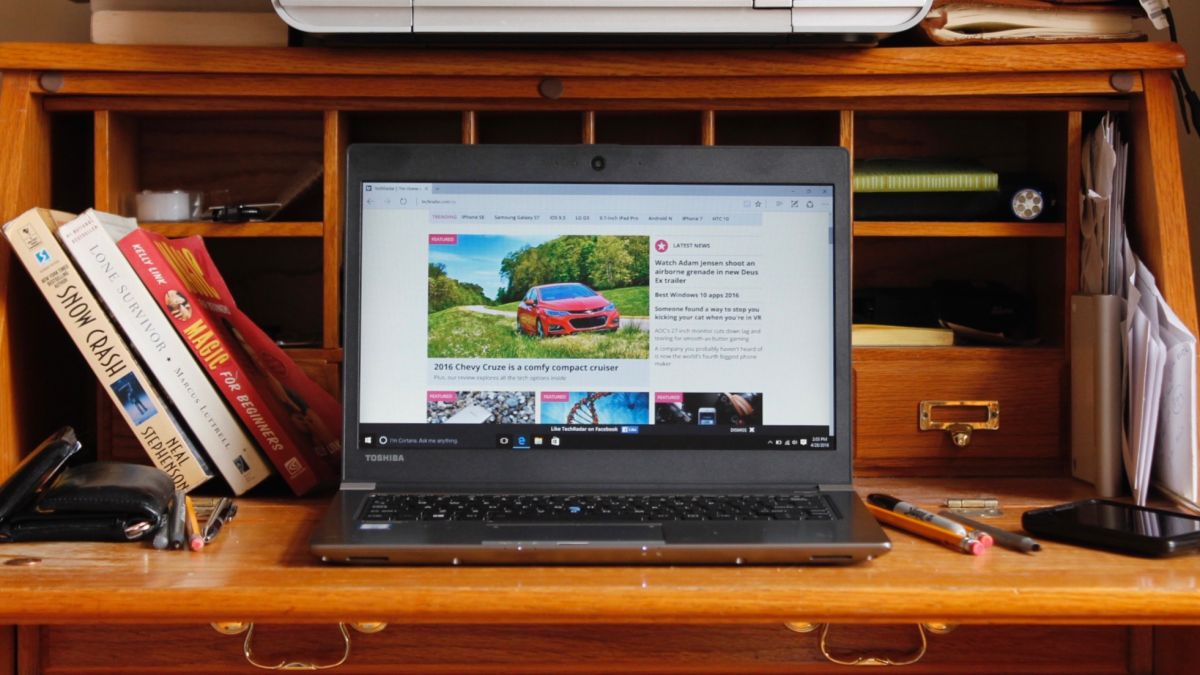
Introduction and design
Toshiba calls the $1,470 or £1,260 (about AU$1,935) Portégé Z30’s coloring Cosmo Silver, but Drab Gray is a more accurate description. This unfortunately gives the Z30 a rather utilitarian appearance better suited to being wedged under a wobbly chair, instead of delivering email or aiding in presentations. But appearances, it’s often said, can be deceiving.
Embedded in this gray slab is everything a business user might need: Ethernet and RGB ports, fingerprint scanner, backlit keyboard, two mouse options (trackpad and pointing stick), three different ways to mouse click, a docking connector and, for good measure, a pipe for the kitchen sink. I’m kidding – but I wouldn’t be surprised if a later iteration of the Portégé Z30 had such a connection.
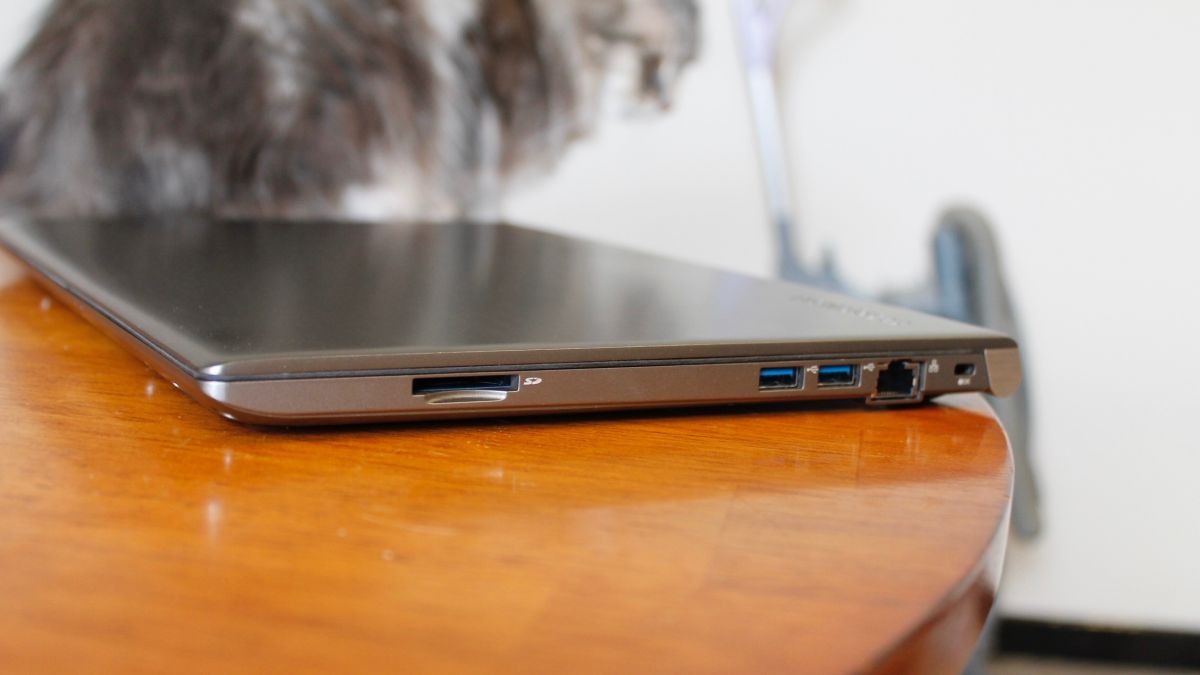
Toshiba engineers fit all of this into a slim and light Ultrabook frame. The downside, of course, is Toshiba engineers had to fit all this into a slim and light Ultrabook frame.
Sacrifices had to be made. The keyboard is cramped. The screen washes out at every angle except when looking at it straight on. And the speakers are more akin to an 80’s portable radio than a 21st century sound bar. This is no MacBook Air.
I’ll say it again: the Toshiba Portégé Z30 is decidedly utilitarian.
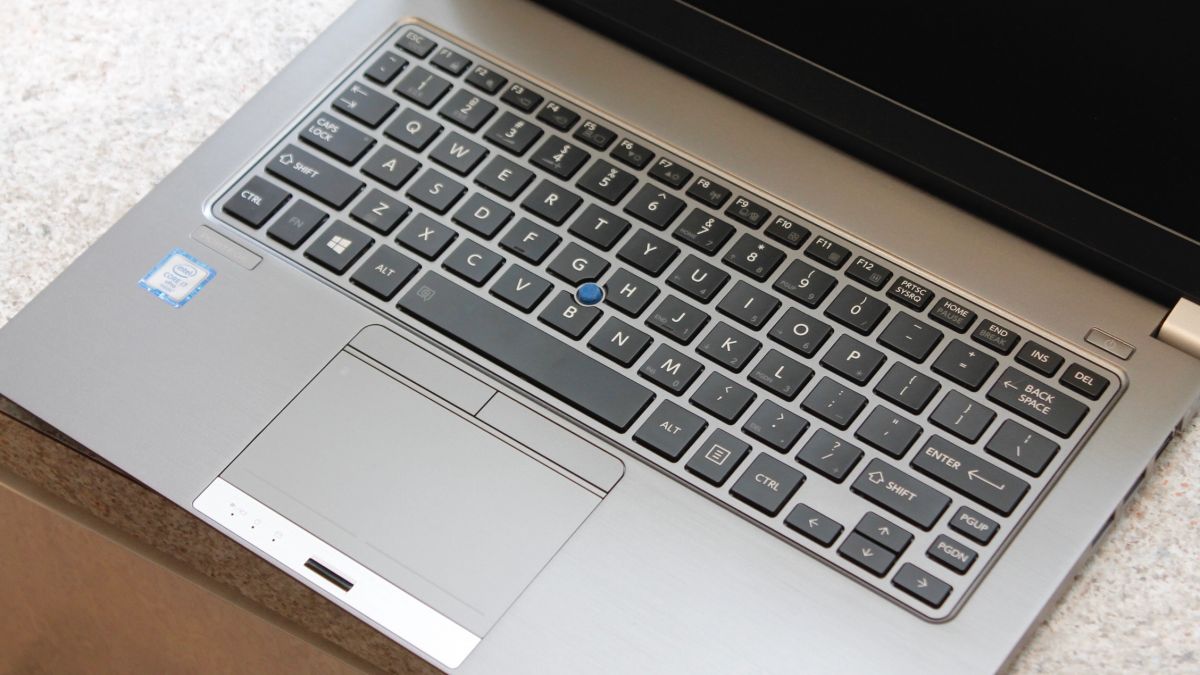
Design
The Portégé Z30 ‘s “Cosmo Silver” exterior features the typical Toshiba flair: a subtle etching made to mimic wood grain. But this aesthetic fits better on Toshiba’s black devices than its silver ones. Even post-modernists will admit silver and wood are rarely complementary.
Its keys and bezel are black, which gives the interior a two-tone appearance. It’s not unattractive, nor is it striking or particularly original. The Cosmo Silver paint job is also too dark to effectively contrast against the black keys. Like its exterior, the Z30’s interior reinforces the “no flash here, just business” theme.
The Portégé Z30 at least ticks all the compulsory Ultrabook boxes. The device has a thin, clean profile and is very well-balanced. No matter the surface – table, tray, or lap – the Z30 never tips or wobbles; it sits flat even when you have the screen leaning all the way back.

Most importantly, the Z30 is light. It’s a svelte 2.65 pounds – lighter than both the Lenovo Yoga 900 (2.84 pounds) and the Asus ZenBook UX303 (3.2 pounds). Of its ultrabook competitors, only the 2.47 pound Dell Latitude 13 will make your business trips easier.
Slight-framed Ultrabooks sometimes suffer from flimsiness, but not the Portégé Z30. Its feels sturdy and well-constructed. The one bendable component, the screen, is a purposeful design choice to help prevent cracking.
The Z30 is also spill and drop resistant, as expected. Toshiba prioritizes build quality in their devices (though this is often to the detriment of other aspects, like aesthetics and power).
The Z30 achieves this durability without adding weight-and-profile killing plastic fairing. It’s a design element that shouldn’t be overlooked. After all business users need a device that will survive the rigors of travel in planes, trains, and automobiles.
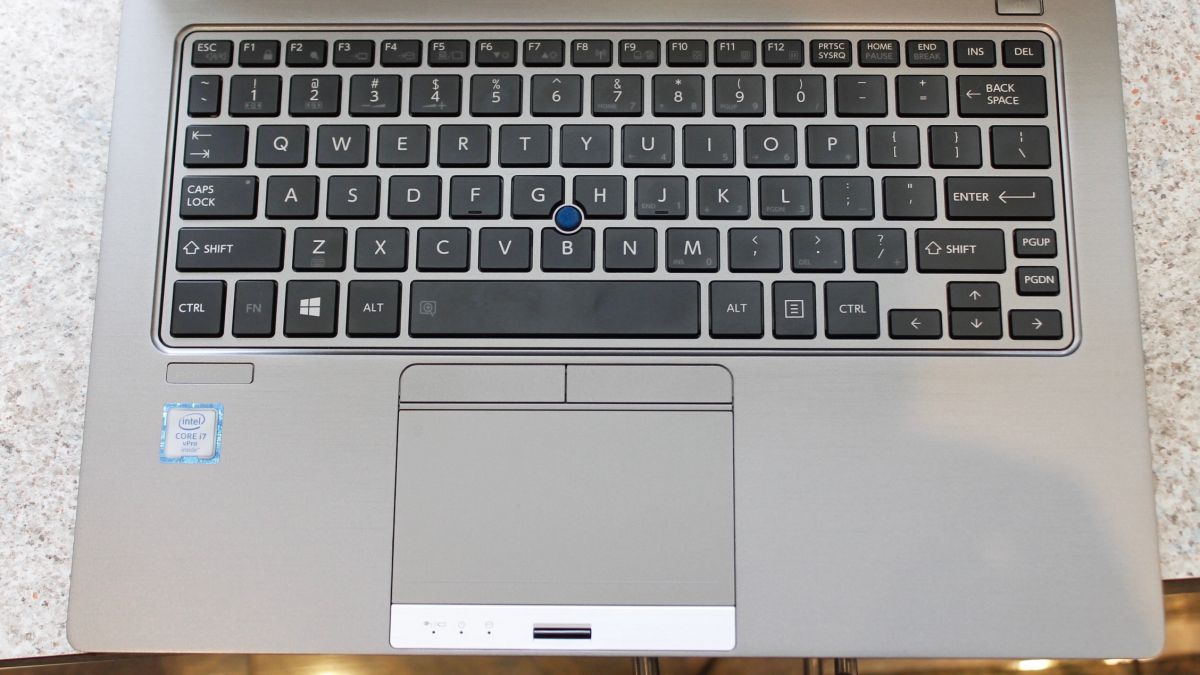
Keyboard and touchpad
The base of the Portégé Z30 is as busy as its business users. In addition to a backlit keyboard and touchpad, there’s a pointing stick (or AccuPoint, as Toshiba calls it). Both pointing devices come with delineated left and right mouse buttons. In the final tally, the Z30 gives you two ways to mouse around and three ways to click if you include tapping on the trackpad itself.
There’s also an enterprise-standard fingerprint scanner, and an array of indicator lights, each for plug/battery status, power on/off, and hard drive usage.
It seems Toshiba went with the age-old chef’s strategy: throw everything into the pot and nobody will complain.
This gumbo approach is not visually appealing, but neither is it uncomfortable. All these inputs somehow stay out of each other’s way. The end result is a net benefit for users. Old ThinkPad’ers will appreciate the tactility of the pointing stick and buttons; the rest of us will continue to trackpad and pretend the 90’s never happened.
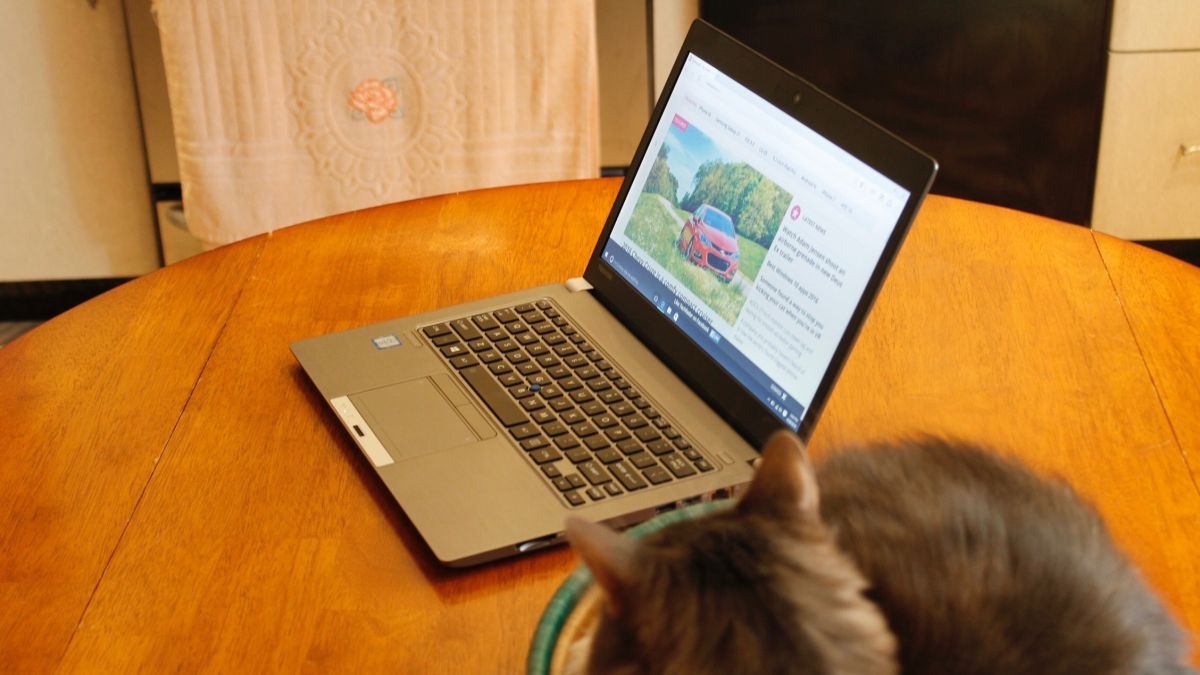
Backlit keyboards are compulsory for business laptops and the chock-full-of-features Portégé Z30 doesn’t forget this one. The backlight is a pleasant soft-white, which provides plenty of illumination without feeling like my retinas are burning when working in the dark.
The mechanics of the chiclet-style keyboard provides a pleasant typing experience as well. Each letter key is relatively oversized, and they provide sufficiently springy feedback with excellent travel.
The keyboard does have two minor downsides. Like many of its laptop compatriots, the keys towards the edges (i.e. function and number keys) feel spongy. And the oversized letter keys occupy so much real estate that integral keys (like Enter, Shift, and Caps Lock) feel a bit cramped.
The Z30’s trackpad has a few downsides as well. Namely it’s multi-touch responsiveness, which is mediocre at best. While the trackpad gestures and functions are very customizable, they are a little too responsive. All too often, swipes to scroll are interpreted as zoom or right click.
On the positive side, the trackpad’s slightly off-center placement keeps it out of the way when typing. The mouse buttons are cleverly delineated within the trackpad by two finger-perceptible hashes. The “physical” mouse buttons sit right above the trackpad, where they are easily accessed when using the trackpoint.

Mute and dull
The Z30’s ports, weight and inputs are home runs (or at least stand up doubles), but its screen is a big whiff.
Its 1,366 x 768 resolution is a downgrade from all other comparable laptops. At 3,200 x 1,800 resolution, the Yoga 900 blows it away. Even the ZenBook UX303 and the business-oriented Latitude 13 7370 outpace it with their 1,920 x 1,080 resolution. The Z30’s screen drags it down; it makes the whole device feel behind the times.
Plus, there are issues even beyond low resolution. Colors are dull. Grays in particular suffer from graininess, regardless of the screen’s brightness. Off-angle viewing is also awful: I have to view the screen straight on or else it washes out.
Even worse than the display are the Z30’s speakers. Muted, tinny sound is all they can muster, and it’s not surprising. Toshiba slipped them underneath the front of the base, where only pants and desks will ever be able to clearly hear them.
Specifications, Performance and Features
All this utility comes at a price too. At $1,470, the Portégé Z30 is more expensive than comparable ultrabooks like the Lenovo Yoga 900 ($1,199, £797, AU$1,705), the Asus ZenBook UX303 ($800 or £770, about AU$1051) and the Dell Latitude 13 7000 ($580, £410, AU$756).
Its price ultimately makes the Portégé Z30 a niche machine. Those who travel often for business will gush at its ports and fingerprint scanner, but the average user will have trouble dropping $1,400 for an ultrabook with a lackluster non-touch, unconvertible screen.
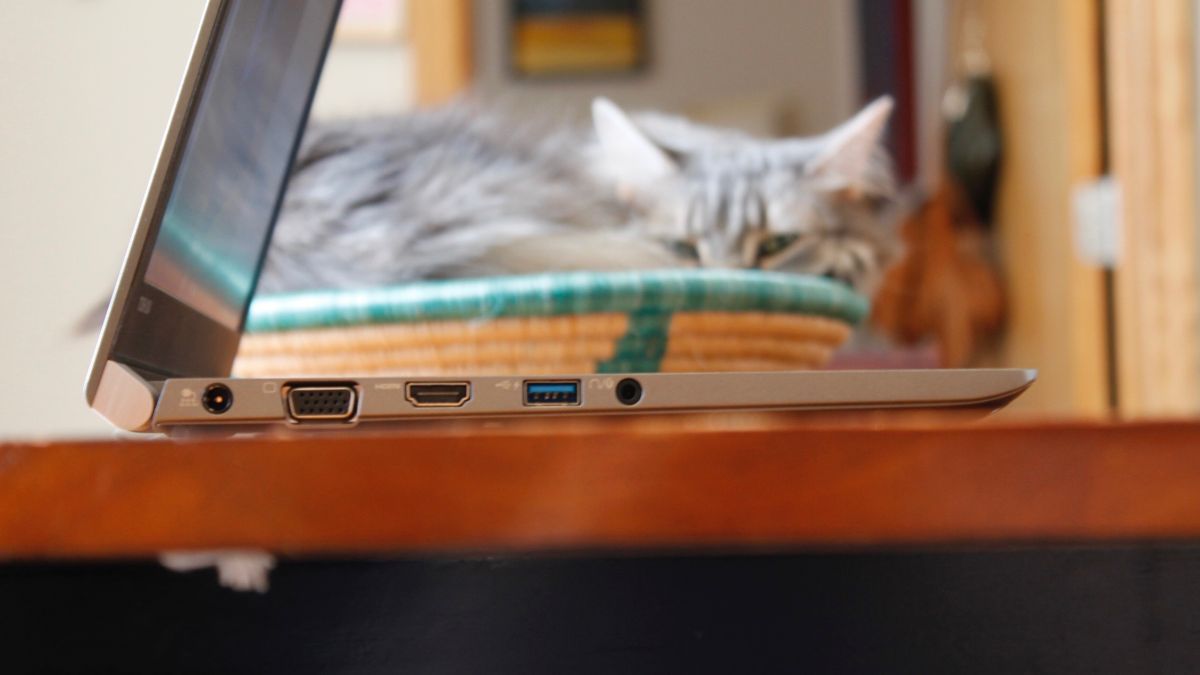
Here is the Toshiba Portégé Z30’s configuration sent to techradar for review:
Spec Sheet
- CPU: 2.6 GHz Intel Core i7-6600U (dual-core, 4MB cache, up to 3.4GHz with Turbo Boost)
- Graphics: Intel HD Graphics 520
- RAM: 8 GB DDR3L 1600 MHz Memory
- Screen: 13.3-inch, 1,366 x 768 widescreen HD TFT LED Backlit display
- Storage: 256GB SSD
- Ports: 3 x USB 3.0 ports (1 with USB Sleep and Charge), Memory Card Reader, HDMI output port, RGB port, Ethernet port, Microphone/Headphone combo jack, Docking Connector
- Connectivity: Intel Dual-Band Wireless-AC 8260 plus Bluetooth
- Camera: Full HD webcam with dual microphones
- Weight: 2.65 pounds
- Size: 12.44 x 8.94 x 0.55 (W x D x H)
This high-end Z30 configuration is equipped with Intel’s sixth generation core i7 processor, which, aside from its excellent port diversity, is one of the hardware highlights of the device. That said, there are cheaper ultrabooks on the market that also have core i7 processors, and better storage and memory to boot.

The Yoga 900 is $370 cheaper than the Z30 yet it has a 512GB solid state drive and 16BG of RAM – double of what Toshiba’s ultrabook holds. The ZenBook UX303 starts at only $800, but it nearly matches the Z30’s specs while delivering (as I’ve already mentioned) a much better screen.
Where the Z30 truly shines is in the breadth and number of its ports. None of the other ultrabooks previously mentioned, not even the Latitude 13 7000, have an RGB port, or a dedicated Docking Connector since Dell has gone to a USB-C solution.
The Z30 is one of the few ultrabooks prepared to interface directly with those not-quite-obsolete hardware, like projectors and hardwired Internet connections.
In terms of ports, only the ZenBook UX303 comes close. Like the Z30, it also has 3 USB 3.0 ports and an Ethernet jack, but the ZenBook’s mini-DisplayPort is not as useful as an RGB. With the ZenBook, client-visiting business users will still have to scramble for an adapter.

Benchmarks
Here’s how the Toshiba Portégé Z30 performed in our suite of benchmark tests:
- 3DMark: Cloud Gate: 4,423; Sky Diver: 3,175; Fire Strike: 590
- Cinebench CPU: 330 points; Graphics: 35.13 fps
- GeekBench: 3,006 (single-core); 6,420 (multi-core)
- PCMark 8 (Home Test): 2,706 points
- PCMark 8 Battery Life: 5 hours and 9 minutes
Even if the Z30’s display and speakers are up to snuff, its Internet-and-Office geared hardware prevent it from ever being mistaken for an everyday consumer machine. Once again, the Portégé affirms that it is all business.
However, it and the other ultrabooks in its category can squeeze some juice out of their hardware when needed: achieving 35 fps on the Cinebench test certainly proves that, as does its average Cloud Gate and Sky Diver scores in comparison with other Core i7-powered notebooks.
The PCMark 8 benchmark cannot be ignored, especially considering the Z30’s “business first” value proposition. The Home Test runs the laptop through a set of rigorous but ubiquitous tasks (like web surfing and video conferencing) in order to evaluate its multitasking capabilities.
The Z30’s 2,706 is an average score, on par with the Yoga 900, well above the Latitude 13 and a bit behind the ZenBook UX303 – of course, the latter two use power sipping Core m processors.
This PCMark 8 score supports my anecdotal experience too. I wrote this review on the Z30, with multiple tabs open and a music streaming service playing in the background, and it performed admirably, never slowing down or struggling to open a file.

PCMark 8’s battery test also places the Z30 firmly in the average camp. At under five and a half hours, its battery life is very similar to other ultrabooks.
However, in our informal battery test (review writing with multiple programs/tabs open and streaming music), the Portégé fares better than its competitors, lasting seven and a half hours.
Only the Yoga 900 matches it, while the ZenBook UX303 and Latitude 13’s batteries fall behind. They peter out after six and half and five and a half hours of use, respectively.
Verdict
In many ways the Portégé Z30 is the business traveler’s perfect device. It combines the low weight, slim profile and the lengthy battery of an Ultrabook with the port diversity and strong inputs of a business laptop. But for most users, these features won’t add enough value to justify the Z30’s over the top price.
We liked
The Z30 is the “all are welcome” Ultrabook. Don’t like a trackpad? Use the pointing stick. Don’t want to keep a list of passwords? It has a fingerprint sensor. No Wi-Fi in that potential new client’s office? There’s an ethernet jack. Thanks to its numerous ports and inputs, the Z30 adapts to any need…
We disliked
…Unless that need is high definition video and audio. It’s unfortunate the Z30 couldn’t at least provide 1,920 x 1,080 resolution, the minimum most of us now expect from our displays.
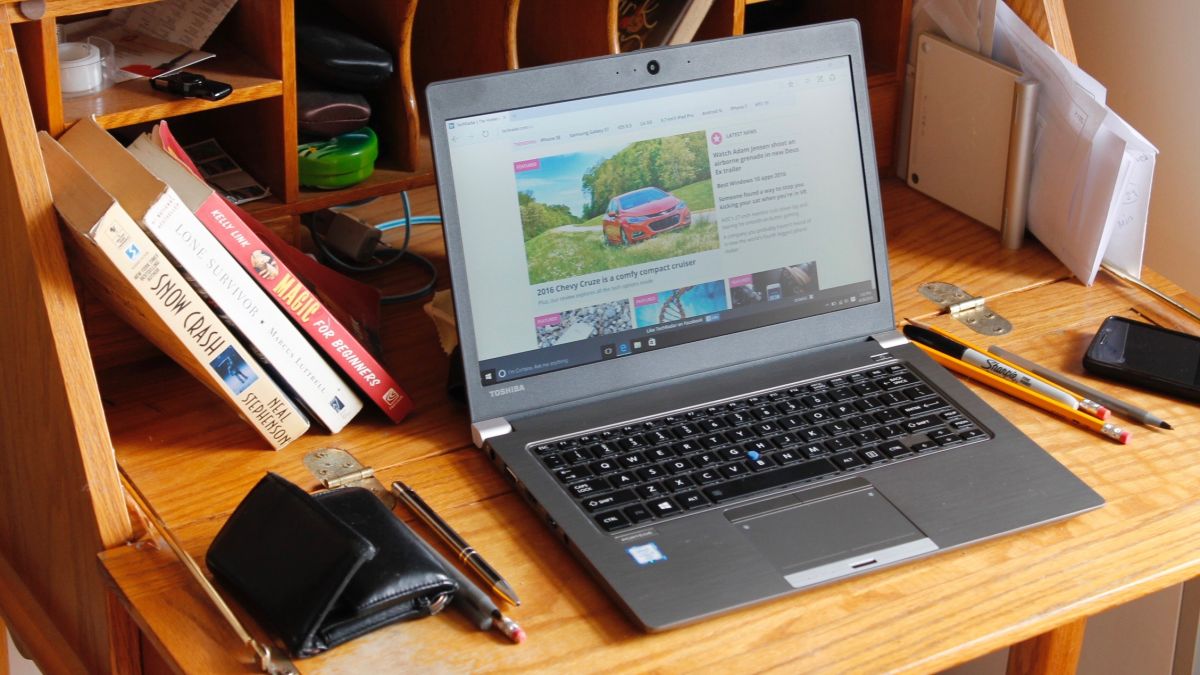
Final verdict
Laptops with a $1,500 price tag need to do something special. And in today’s market, a laptop with “a lot of ports and inputs” may be different, but it’s not special.
The Portégé Z30, with its pointing stick and RGB port, is basically an IBM ThinkPad with its stomach stapled. Until its price comes down, this old-at-heart laptop will only satisfy business travelers who have very particular security, durability and client needs – or an extreme case of nostalgia.
Source: techradar.com









































